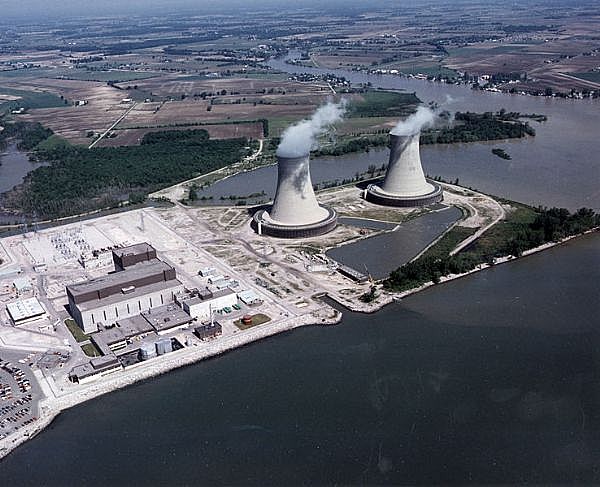
Workers recover the remains of a female giant squid in Spain's Asturias province in 2003. Photograph by Fernando Camino, Cover/Getty Images
 For many alien enthusiasts, Jill Tarter is synonymous with the search for extraterrestrial intelligence. As the SETI Institute’s research director — and the inspiration for Jodie Foster’s character in Contact — she’s done more than anyone to raise the search for cosmic company from a fringe effort to serious science.
After receiving a TED prize in 2009, Tarter had grand plans for the Allen Telescope Array, a proposed field of 350 big-nosed radio dishes that would be the world’s only dedicated SETI telescope, as well as its most sensitive. But this week, budget cuts forced the ATA’s existing 42 dishes into hibernation mode. The rest are now just a dream.
Wired.com talked with Jill Tarter about the shutdown and what it means for the future of SETI....
For many alien enthusiasts, Jill Tarter is synonymous with the search for extraterrestrial intelligence. As the SETI Institute’s research director — and the inspiration for Jodie Foster’s character in Contact — she’s done more than anyone to raise the search for cosmic company from a fringe effort to serious science.
After receiving a TED prize in 2009, Tarter had grand plans for the Allen Telescope Array, a proposed field of 350 big-nosed radio dishes that would be the world’s only dedicated SETI telescope, as well as its most sensitive. But this week, budget cuts forced the ATA’s existing 42 dishes into hibernation mode. The rest are now just a dream.
Wired.com talked with Jill Tarter about the shutdown and what it means for the future of SETI....
 For as long as people have been drinking alcohol, they've been trying to figure out a way to avoid its woozy, nauseated, sensory-amplified aftermath. But is there really any foolproof strategy for preventing a hangover besides, say, not drinking?
Scientifically speaking, no. There is no such thing as a hangover cure. In a review of 15 clinical trials of hangover-intervention methods, a team of researchers publishing in the British Medical Journal found that not a single one worked. They concluded:...
For as long as people have been drinking alcohol, they've been trying to figure out a way to avoid its woozy, nauseated, sensory-amplified aftermath. But is there really any foolproof strategy for preventing a hangover besides, say, not drinking?
Scientifically speaking, no. There is no such thing as a hangover cure. In a review of 15 clinical trials of hangover-intervention methods, a team of researchers publishing in the British Medical Journal found that not a single one worked. They concluded:...
 Endocrine disruption, diabetes, obesity—to the list of ills potentially associated with exposure to the chemical bisphenol-A (BPA), you can add one more: childhood asthma. In a new study presented over the weekend at the Pediatric Academic Societies (PAS) annual meeting in Denver, researchers from the Penn State College of Medicine found that if pregnant women are exposed to BPA, their children may end up at a higher risk for developing asthma early in life.
...
Endocrine disruption, diabetes, obesity—to the list of ills potentially associated with exposure to the chemical bisphenol-A (BPA), you can add one more: childhood asthma. In a new study presented over the weekend at the Pediatric Academic Societies (PAS) annual meeting in Denver, researchers from the Penn State College of Medicine found that if pregnant women are exposed to BPA, their children may end up at a higher risk for developing asthma early in life.
...
 WASHINGTON — In an effort to encourage nuclear power, Congress voted in 2005 to authorize $17.5 billion in loan guarantees for new reactors. Now, six years later, with the industry stalled by poor market conditions and the Fukushima disaster, nearly half of the fund remains unclaimed. And yet Congress, at the request of the Obama administration, is preparing to add $36 billion in nuclear loan guarantees to next year’s budget.
Even supporters of the technology doubt that new projects will surface any time soon to replace those that have been all but abandoned.
“My gut feeling is that there is going to be a delay,” said Neil Wilmshurst, a vice president of the Electric Power Research Institute, a nonprofit utility consortium based in Palo Alto, Calif. News on Thursday that Exelon Corporation, the nation’s largest reactor operator, planned to buy a rival, the Constellation Energy Group, only reinforces the trend; until late last year, Constellation wanted to build, while Exelon was firmly against it.
...
WASHINGTON — In an effort to encourage nuclear power, Congress voted in 2005 to authorize $17.5 billion in loan guarantees for new reactors. Now, six years later, with the industry stalled by poor market conditions and the Fukushima disaster, nearly half of the fund remains unclaimed. And yet Congress, at the request of the Obama administration, is preparing to add $36 billion in nuclear loan guarantees to next year’s budget.
Even supporters of the technology doubt that new projects will surface any time soon to replace those that have been all but abandoned.
“My gut feeling is that there is going to be a delay,” said Neil Wilmshurst, a vice president of the Electric Power Research Institute, a nonprofit utility consortium based in Palo Alto, Calif. News on Thursday that Exelon Corporation, the nation’s largest reactor operator, planned to buy a rival, the Constellation Energy Group, only reinforces the trend; until late last year, Constellation wanted to build, while Exelon was firmly against it.
...
Researchers have found and named a new dinosaur species closely related to the massive theropod Tyrannosaurus rex. The newly discovered creature, dubbed Zhuchengtyrannus magnus and believed to be one of the largest known carnivorous dinosaurs, was identified based on skull and jaw bones unearthed from an eastern Chinese quarry. A long-lost cousin of prehistory’s most infamous predator, Tyrannosaurus rex, has been found and identified, according to a paper published online on April 1, 2011, in the scientific journal Cretaceous Research. The gargantuan theropod has been dubbed...
 Awww, so sad. Just heard the news:
Awww, so sad. Just heard the news:
Berlin's beloved polar bear Knut, who rose to international stardom as a cuddly cub hand-raised by zookeepers, died suddenly on Saturday, a zoo official said.
The world-famous bear died alone in his compound without warning, bear keeper Heiner Kloes told The Associated Press.
"It was a completely normal day: He was with the female bears before, who had just been shut away," Kloes said. "Then, Knut strolled around the enclosure, went into the water, had a short spasm and died." A post mortem will be conducted on Monday to try to pinpoint the cause of death, he said.
Between 600 and 700 people were at Knut's compound and saw the four-year-old bear die, German news agency DAPD reported.
One visitor said she watched Knut lying on the surface of the water motionless with only his back showing for ten minutes until zookeepers came and fenced off the compound. "Everybody was asking, 'What's going on, why is Knut not moving?'" said Camilla Verde, a 30-year-old Italian who lives in Berlin.
...
 On Feb. 25, I posted a blog arguing that nuclear weapons are the most important and urgent environmental threat today—even more important than climate change caused by greenhouse gasses. I received quite a bit of feedback from environmentalists—many of whom took umbrage with my thesis.
Interestingly, no one argued that the predictions of climate change following a limited nuclear war (50-100 Hiroshima-sized bombs) was unsound—after all, scientists use some of the same climate modeling techniques to predict the global cooling from nuclear fallout and soot as they use to chart the future of global warming from carbon emissions and other greenhouse gases. Many environmentalists felt simply that the chances of nuclear war were so small that worrying about its effect on the climate was a waste of time. Joe Romm's sentiments on the Climate Progress blog were typical: "So the scenario being offered is that some accident or other event leads to India and Pakistan suicidally using most of their nuclear weapons on each other. Something to worry about? Absolutely. Likely? Not terribly. Preventable through the political efforts of U.S. environmentalists? Gimme a break!"...
On Feb. 25, I posted a blog arguing that nuclear weapons are the most important and urgent environmental threat today—even more important than climate change caused by greenhouse gasses. I received quite a bit of feedback from environmentalists—many of whom took umbrage with my thesis.
Interestingly, no one argued that the predictions of climate change following a limited nuclear war (50-100 Hiroshima-sized bombs) was unsound—after all, scientists use some of the same climate modeling techniques to predict the global cooling from nuclear fallout and soot as they use to chart the future of global warming from carbon emissions and other greenhouse gases. Many environmentalists felt simply that the chances of nuclear war were so small that worrying about its effect on the climate was a waste of time. Joe Romm's sentiments on the Climate Progress blog were typical: "So the scenario being offered is that some accident or other event leads to India and Pakistan suicidally using most of their nuclear weapons on each other. Something to worry about? Absolutely. Likely? Not terribly. Preventable through the political efforts of U.S. environmentalists? Gimme a break!"...